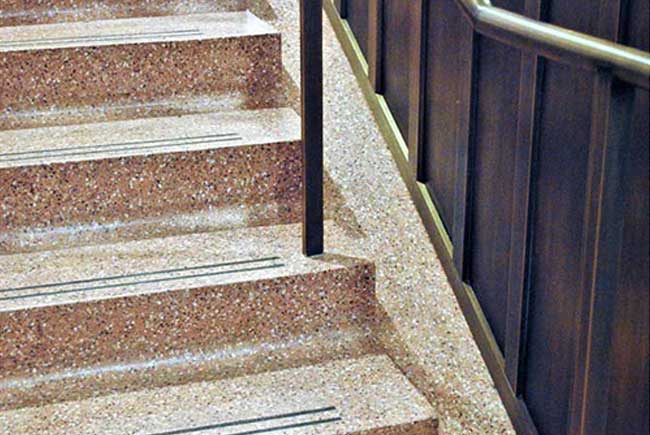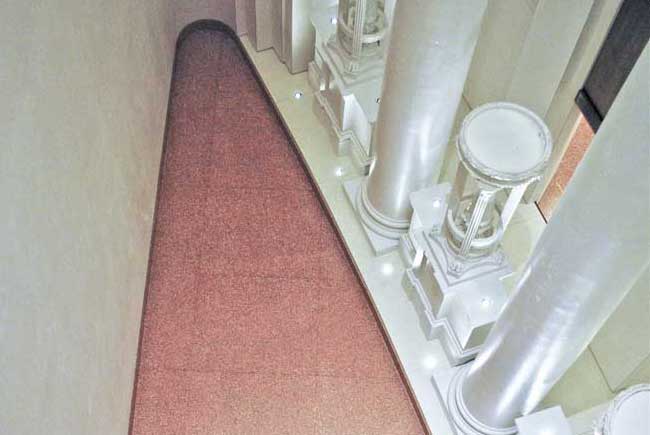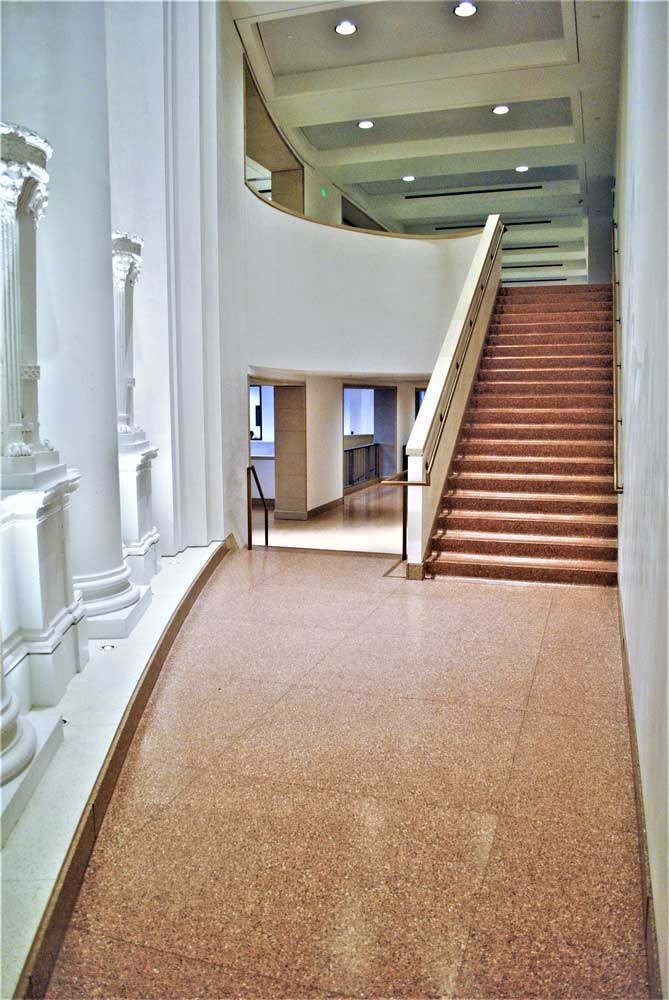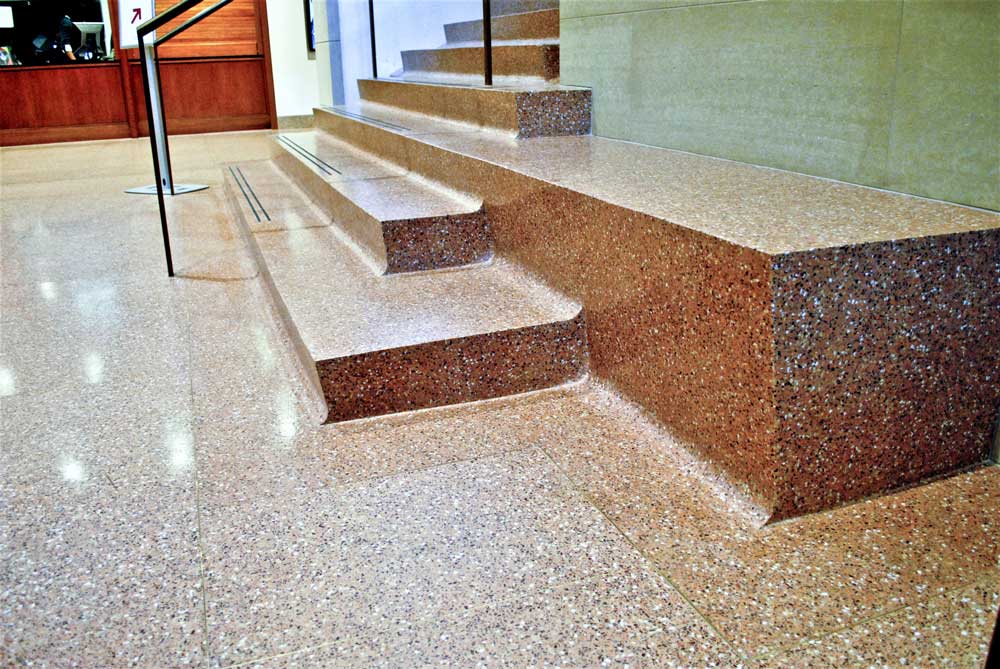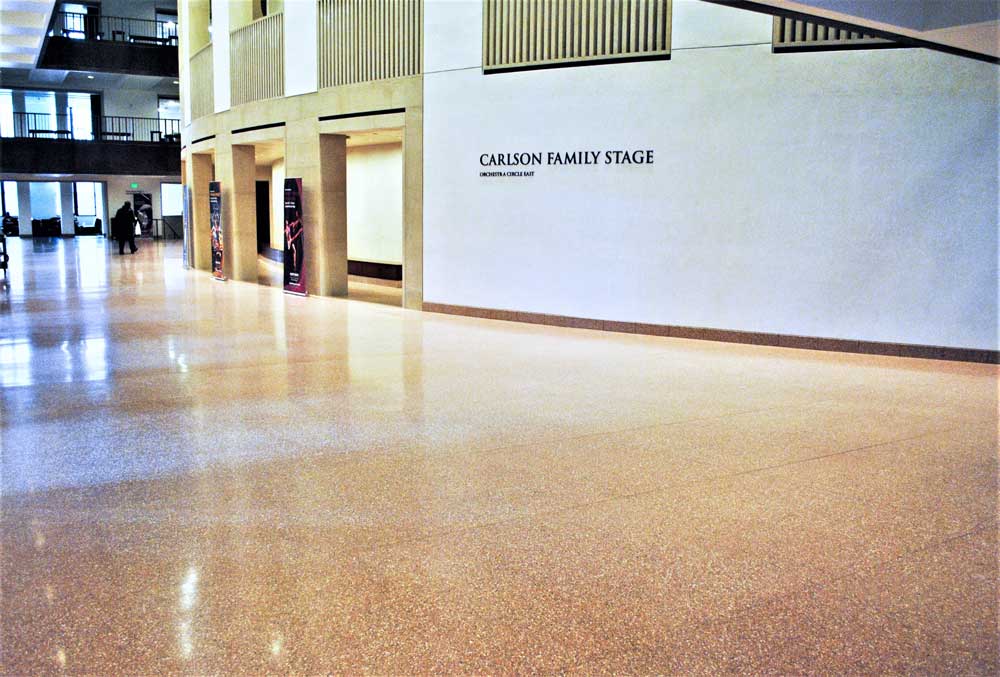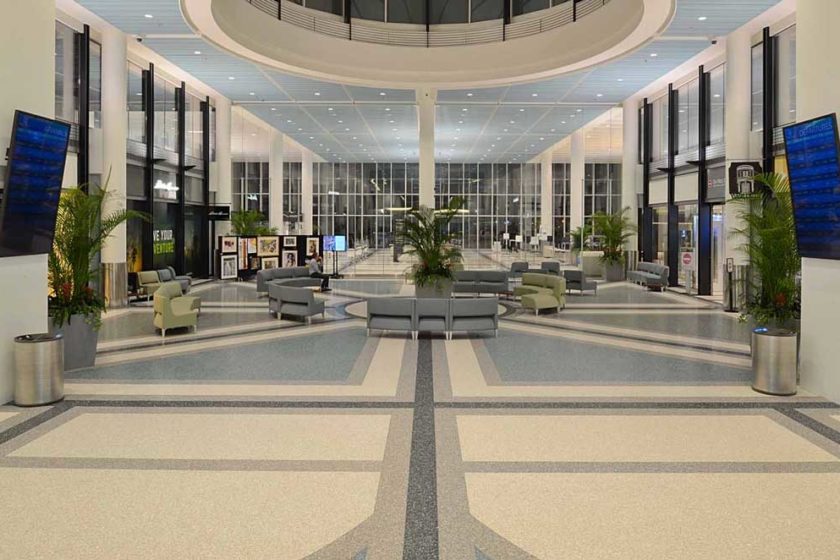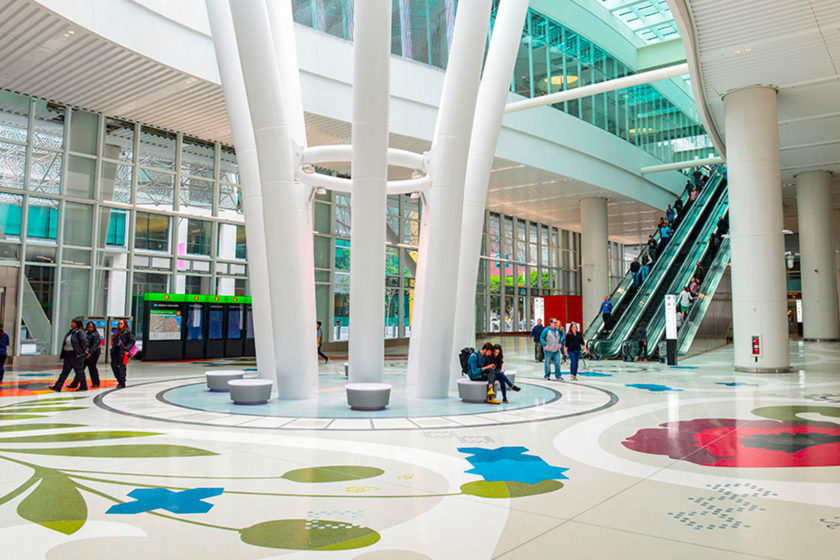Radical Transformation Retains Key Historic Elements While Increasing Functionality
Since its dedication in 1929, Northrop Auditorium has been an iconic Minnesota landmark. The staid neoclassical structure has provided the backdrop for cultural events for several generations, its stage drawing legendary performances: from rockers to opera, statesmen’s speeches to bodybuilding competitions, from protests to Prairie Home Companion.
Following an exterior facelift in 2006, a radical transformation of the building’s interior was undertaken in 2011. “This project is one of the more extensive auditorium remodel projects in the country,” reported Brent Dunlap, construction manager at risk on the project with JE Dunn of Eden Prairie, Minn. “It was both a major structural demolition and major reconstruction project.”
The interior remodel took a clean-slate approach. All systems were gutted and replaced to render the structure acoustically and visually state-of-the-art and amplify its functionality.
“Everybody had to bring their best game and solve problems not typically solved,” noted Jim Moore, AIA, LEED AP, architect on the project, associate vice president with Hammel, Green, and Abrahamson of Minneapolis.
Virtually the entirety of the reconstruction, completed in April 2014, was contracted within the building’s shell, a total of 175,000 square feet. It was a “ship-in-a-bottle construction,” as Mr. Dunlap described it.
Little behind the structure’s famous face was spared in the interest of meeting the project goals, but a couple of original elements of historical value and character made the cut. The majestic entryway, Memorial Hall, was primarily preserved, its original 85-year-old terrazzo floor refinished and joined by an award-winning installation of new terrazzo.
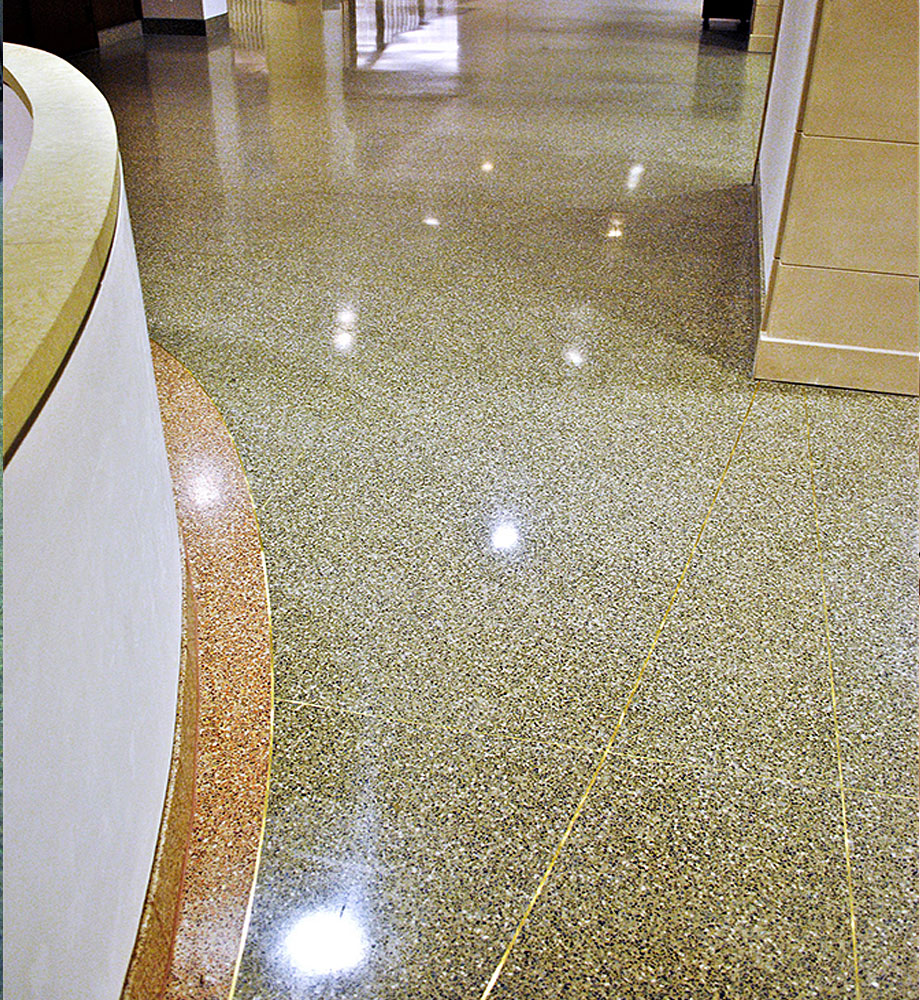

Behind the Scenes
Before the remodel, other than when an event filled the performance venue about once a week, the distinguished old structure was sitting idle, empty amidst the bustle of the campus, with space at a premium. The construction team was charged with redesigning the structure to work as a more integral part of the campus while preserving its function as a performance venue.
By reducing the auditorium from 4,850 seats to 2,700, square footage was gained and repurposed to expand the daily flow of foot traffic in Northrop. In exchange for a diminished but improved performance space, where a higher percentage of seats have a great view of the stage, multiple-use space for students was increased by 13,000 square feet. An inner atrium between Memorial Hall and the auditorium was also added. Since its restoration, the building is referred to simply as “Northrop” to reflect its expanded role within the campus.
Except for a small addition to one side of the structure, granting more onstage elbow room, the original building’s skin was kept intact. The massive interior changes are not outwardly evident from the other three sides of the building.
“We used many different means and methods, all within the confines of the existing walls and roofs,” said Mr. Dunlap. Two 120-ton cranes were brought inside the building for hoisting. The large original balcony was removed, along with the 150,000-pound beam supporting it, to make way for three new cantilevered balconies. Columns and footings supporting hundreds of thousands of pounds were cut out and replaced, the column held up on stilts while new footings were installed under them, Mr. Dunlap recounted.
Multiple Roles
The 34,000 square-foot installation of new terrazzo meets the historic terrazzo in the doorways leading to the new inner lobby. The new installations are evenly divided between a three-inch sand cushion on the ground floor and three-eighths-inch epoxy terrazzo on the second and third-story atrium balconies.
Specified for the upper atrium floors, the thinner epoxy resin matrix veneer is poured over a level concrete slab. The “thin-set” system weighs 3 to 4 pounds per square foot. Along with the newly built atrium floors, an original poured-in-place concrete staircase was also matched to the rest of the flooring with the same design details, in a thin coat of epoxy.
Other variations of terrazzo were installed, from poured-in-place steps and pre-cast base to a bonded cement system. The new terrazzo in its various forms was custom matched to be indistinguishable from the original flooring. “I was impressed that the craftsmen were able to deliver a product that made all those transitions while looking like the same product,” the architect, Mr. Moore, reported.
Sound Effects
The new auditorium space was designed for state-of-the-art acoustics, expertly accomplished through shapes and materials, along with a new double door system. While the performance hall was acoustically isolated from the rest of the building, it lacked an isolated slab. To keep footfall noise from the public spaces and upper floors outside the hall from penetrating the auditorium, the newly installed terrazzo was laid over a resilient pad, a three-eighths-inch undercoat of ground recycled rubber tires.
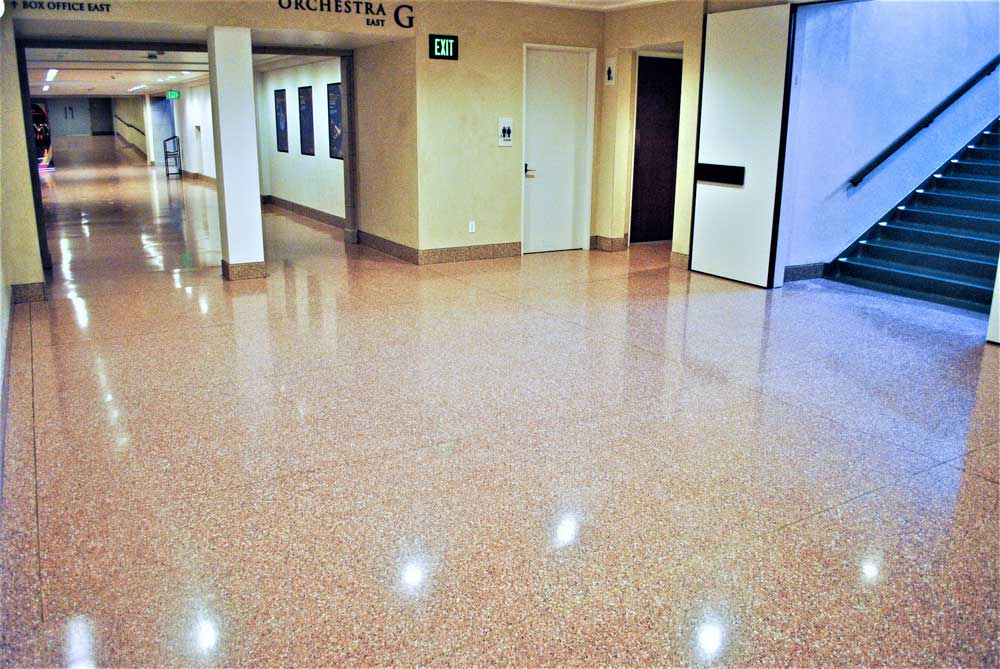
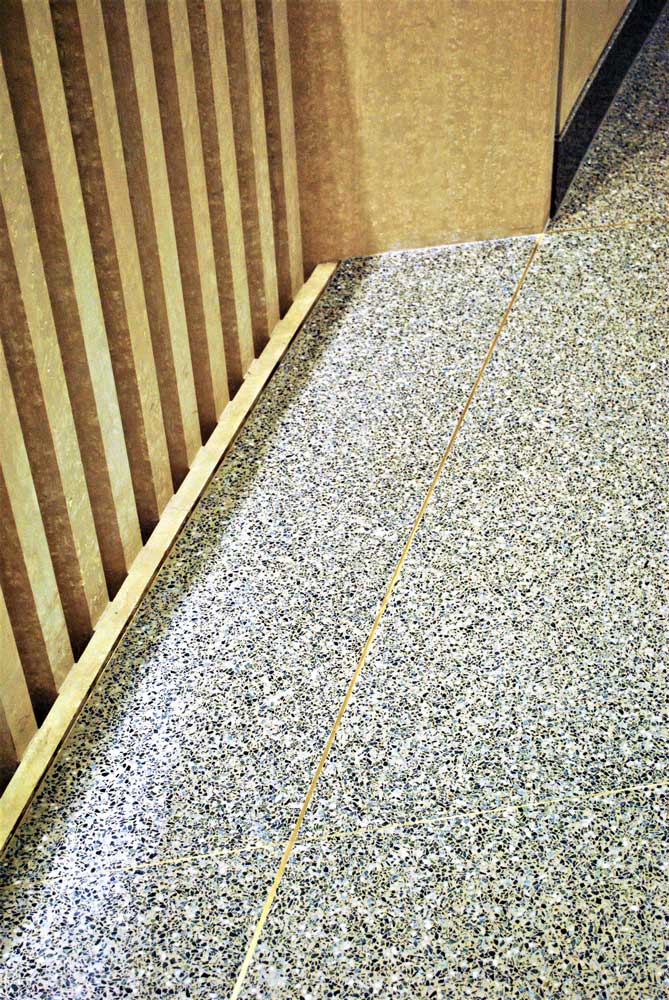 The architect noted that both terrazzo as a material and the contractor had met the historical context’s challenges. Mr. Moore credited Advance Terrazzo for an “incredible job” on the complex divider strip pattern employing 16-gauge, 1/8- and 3/8-inch heavy top to accent the design and harmonize with the historic terrazzo.
The architect noted that both terrazzo as a material and the contractor had met the historical context’s challenges. Mr. Moore credited Advance Terrazzo for an “incredible job” on the complex divider strip pattern employing 16-gauge, 1/8- and 3/8-inch heavy top to accent the design and harmonize with the historic terrazzo.
“Terrazzo is a very durable material that still requires a high level of craftsmanship to get it done right,” said Moore. “It will outlive most of the finishes in the building.”
